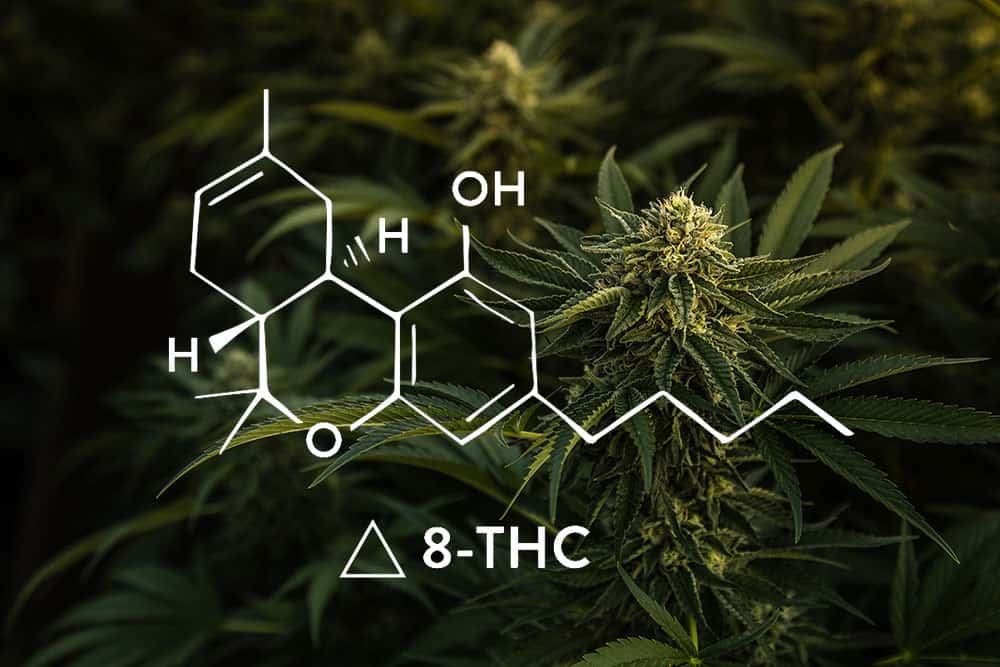How Many Adolescents Have Borderline Personality Disorder?
According to Adolescent Health, Medicine, and Therapeutics, “the prevalence of BPD [borderline personality disorder] in the general population of adolescents is around 3%.”
The article also states that “[t]he clinical prevalence of BPD ranges from 11% in adolescents consulting at an outpatient clinic to 78% in suicidal adolescents attending an emergency department.”
In other words, about one in every ten adolescents in outpatient mental health treatment has borderline personality disorder, and nearly eight in ten adolescents seeking emergency services for suicidal behaviors have BPD.

The prevalence of BPD among teens is similar to adults, and BPD can be diagnosed reliably in adolescents as young as 11 years old.
A 2013 article from Dialogues in Clinical Neuroscience states that “the diagnostic criteria for BPD are as reliable, valid, and stable in adolescence as they are in adulthood.” A BPD diagnosis can help you get into treatment before early adulthood.
With a BPD diagnosis in adolescence, young people can start seeking treatment options now to prevent worsening symptoms. You can also avoid developing a co-occurring disorder like substance use disorder with early interventions for BPD.
While women are more likely to seek treatment for symptoms of BPD, this mental health disorder affects men and women equally.
Fortunately, BPD can be recognized and treated in teens and young adults. You can look for symptoms of BPD for a proper diagnosis. If you or your loved one experiences signs of BPD, contact a mental health professional for guidance, support, and treatment.

What Are The Symptoms Of Borderline Personality Disorder?
The symptoms of borderline personality disorder include the following:
- A real or imagined fear of abandonment
- Intense and unstable relationships, with extremes between idealizing and then devaluing the other person
- Unstable identity and self-image with rapidly changing values and goals
- Stress-related paranoia thinking and periodically losing touch with reality (also known as “dissociation”)
- Impulsive behaviors that could be dangerous, like unsafe sex, reckless driving, or substance abuse
- Self-destructive behaviors, such as ending a healthy relationship or suddenly quitting preferred extracurricular activities
- Suicidal ideations (thoughts and obsessions about suicide)
- Suicidal behaviors, like attempts and threats
- Self-harming behaviors, like cutting or burning the skin
- Intense mood swings and uncontrollable anger (BPD can sometimes be confused for bipolar disorder)
- Emotional dysregulation and a low distress tolerance
- Chronic feelings of emptiness
According to the Diagnostic and Statistical Manual of Mental Disorders (DSM), you or your loved one would need five or more of these symptoms for a diagnosis of borderline personality disorder. These symptoms create severe impairments in everyday life.
“All-or-nothing” or “black-and-white” thinking is also common among teens with BPD.
Most things in life have a mix of good and bad qualities. Few things are wholly “bad” or “good.” For example, a nice person could have a bad day or be too busy to speak with us. Your best friend might miss a text message once in a while.
Teens with BPD might struggle with these grey areas in life and with other people. “Black-and-white” or “all-or-nothing” thinking leads to unstable self-images and perceptions of other people and events.
Distorting thinking and intense feelings might lead to extreme behaviors.
The feelings of emptiness, distorted sense of self, and fear of abandonment can drive the intense behaviors of those with BPD. Teens with BPD might appear “clingy,” “moody,” or “dramatic” to others. Often, their behaviors might be viewed as a way to attract attention.
Signs of BPD should not be ignored or brushed off as a cry for attention.
Teens with BPD might appear to be acting dramatically or “over-the-top.” However, to those with BPD, their behaviors and reactions feel warranted. These intense emotions can increase a teen’s risk of suicide.
A study in Personal Mental Health showed that among suicidal adolescents, a diagnosis of BPD significantly increases the risk of attempting suicide.
Adolescents with BPD are at a high risk of suicide attempts and other types of self-injury. A common sign of BPD in teens and young adults is self-harming behaviors, like cutting, burning, head-banging, or even purposefully getting hurt by falling.

Why Is My Teen Cutting Themselves?
Your teen could be cutting themselves or hurting themselves in other ways due to BPD.
Self-injury and self-harming behaviors with BPD occur due to intense and uncontrollable emotions. Self-harm can be a way of finding release for these emotions. These behaviors are usually not an attempt at suicide, but they could signify mental illnesses like BPD.
Common self-harming behaviors include:
- Cutting on the arms or legs
- Scratching into the surface of the skin
- Burning the skin
- “Picking” at wounds to hinder the healing process
- Carving words or symbols into the skin
- Head-banging, punching, or hitting yourself
- Piercing the skin with needles, tacks, and other sharp objects
- Pulling out hair or eyelashes
- Swallowing inedible objects, including razors and batteries
- Purposeful injuries, like falling down a flight of stairs
Teens who use self-harming behaviors will attempt to cover up their behaviors. Cutting, scratching, and burning can lead to visible and permanent scars. These behaviors can also lead to infections, which can be problematic if your teen hides their injuries.
Signs that your teen is harming themselves include:
- Wearing long-sleeved shirts or long pants in warm weather to cover up scars
- Presence of fresh scars, bruises, and burns
- Collecting things like knives, razors, or lighters
- Cuts that never heal due to purposeful interference
- Excuses for frequent injuries
Teens who struggle with emotional regulation could use self-injury to regulate their emotions. These behaviors are maladaptive strategies that “work” in the short term but lead to negative long-term consequences.
Reasons for self-injury include the following:
- To feel something when feeling empty or numb
- Distraction from distressing emotions
- Gain a sense of control
- Attempting to express emotional pain with physical pain
- Punishment when a person feels they did something wrong, shameful, or embarrassing
Understanding why your teen engages in self-harm can help to find solutions to express and regulate emotions in a healthy way. Teens with BPD can learn new ways to manage their emotions and cope with stress and anxiety.

What Causes Borderline Personality Disorder In Teens And Young Adults?
Risk factors for developing borderline personality disorder in teens and young adults include:
- Family history
- Having a close family member with a BPD diagnosis increases your risk of developing BPD.
- Research on the genetic link of BPD is still new, and more studies need to be conducted.
- Brain abnormalities
- Some studies show differences in the brains of those with BPD versus those without this disorder.
- These abnormalities include structural and functional changes to parts of the brain responsible for impulse control and emotional regulation.
- However, it is not known if these brain abnormalities cause BPD or if BPD changes the brain.
- Environmental factors
- Growing up with a parent or caregiver with BPD, a substance use disorder, a physical disability, or an untreated mental health issue could lead to feeling neglected as a child.
- Parents and caregivers with significant mental and physical health issues might be inconsistent when displaying affection and showing love to their children.
- When a parent or caregiver is unable to fulfill your needs to feel loved and develop a sense of belonging, you might struggle with attachment issues in your relationships outside of the family.
- Trauma and abuse
- Children who were abused, neglected, or experienced trauma could develop BPD as a result.
- Many people with BPD have experienced childhood trauma; however, most people with a history of trauma do not develop BPD.
According to the National Institute of Mental Health (NIMH), “Although these factors may increase a person’s risk, it does not mean that the person will develop [BPD]” and “there may be people without these risk factors who will develop [BPD].”
BPD in teens could be a maladaptive response to not getting their needs met, especially when a child is not taught healthy coping skills or is neglected during times of stress.
Many of the behaviors that signify BPD could be maladaptive (unhealthy) ways that teens use to meet their needs. When you see unhealthy behaviors in your loved ones, it is crucial to understand the need that they are trying to meet with this behavior.
Teens and young adults with BPD might engage in dangerous and harmful behaviors. While you need to take these signs seriously, remember not to overreact. Instead, get help and seek to understand why this behavior is occurring.

What Does ‘Quiet BPD’ Look Like?
“Quiet BPD” can be challenging to identify in teens and young adults; however, you can look for telling signs of this disorder even without the usual overt behaviors.
Young people with quiet BPD fit the same diagnostic criteria of the disorder, yet they don’t act like the “typical” person with BPD. Like all mental health disorders, BPD doesn’t always look the same for each person.
The difference between “quiet” and “typical” BPD is how the person expresses their symptoms.
Generally, those with BPD have outward behaviors, like anger outbursts, tantrums, risky behaviors, and clear patterns of self-destruction. With quiet BPD, the person expresses their symptoms inward, directing their feelings toward themselves rather than others.
A person with quiet BPD might display the following signs:
- Isolation, avoidance, and withdrawal from others during times of stress
- Appearing “clingy” or obsessed with a specific person
- Using passive ways to express anger toward others (like “the silent treatment”)
- Being a harsh self-critic
- Self-harming behaviors that are hidden from others
- Unhealthy boundaries with other people, like over-sharing personal information or excessive people-pleasing
- Taking things personally, especially minor issues or conflicts
- Feeling that it is wrong to have emotions resulting in suppressing feelings
- Directing anger and hostility inward
While quiet BPD might be difficult for others to recognize, symptoms like chronic feelings of emptiness, fear of abandonment, and an unstable sense of self could lead to these internal maladaptive behaviors.
Many of these behaviors could be similar to other mental health disorders, like depression and anxiety. If you or your loved one struggle to maintain or form healthy relationships and a sense of self-worth, speak to a mental health professional for guidance.
You can learn healthy ways to express your emotions and connect with yourself and others. One of the most effective treatment options for both quiet and typical BPD is called “dialectical behavioral therapy” (DBT).

How Does Dialectical Behavioral Therapy (DBT) Treat BPD?
DBT focuses on building four skills: mindfulness, interpersonal effectiveness, emotional regulation, and distress tolerance.
Symptoms of BPD are often maladaptive responses to intense emotional experiences. These symptoms manifest as behaviors that you can change with new skills. DBT focuses on building healthy coping skills to replace maladaptive thoughts and behaviors.
The following four skills are the central focus of DBT:
- Mindfulness: You might struggle to feel “in the moment” due to dissociation from reality. Mindfulness skills help you stay grounded during times of stress and discomfort.
- Interpersonal effectiveness: Problems with relationships is one of the most significant impairments of BPD. During DBT sessions, you will learn interpersonal skills to build and maintain healthy relationships.
- Emotional regulation: You might think that intense emotions present with BPD are outside your control. With DBT, you will learn to manage your emotions to prevent outbursts and self-harming behaviors.
- Distress tolerance: When things don’t go your way, you might struggle to soothe yourself or de-stress. When you increase your ability to tolerate distress, you can build resiliency and a balanced outlook on life.
These four skills are crucial to managing stress, establishing healthy boundaries, and changing distorted thinking. During DBT, you will practice these skills with your therapist and possibly in a group setting. You will also complete exercises on your own between sessions.
DBT stresses the importance of accepting yourself as you are to make the significant changes you need to heal from BPD.
“Dialectics” in DBT refers to seemingly opposing ideas that can co-exist. People with BPD might find it challenging to accept specific dialectics about life and other people. These impairments can lead to “all-or-nothing” or “black-and-white” thinking.
One common dialectic used in DBT is the notion of accepting yourself for who you are while also recognizing the need for change. A critical aspect of recovering from any mental health disorder is accepting yourself for who you are.

What Treatment Options Are Available For Teens With Borderline Personality Disorder?
While DBT is one of the most effective treatment options for teens with BPD, you can also explore other options to create a comprehensive treatment plan.
Like other mental illnesses, you can recover from BPD through multiple avenues of treatment. You might combine various types of psychotherapy and activities to find the best approach for your needs.
Aside from DBT, you can also try the following to treat BPD:
- Cognitive-behavioral therapy (CBT):
- CBT focuses on challenging negative self-beliefs and unhelpful thoughts that hold you back from living a happy life.
- CBT is one of the most commonly used evidence-based practices for various mental health conditions, like depression, anxiety, and trauma.
- Aspects of CBT in your program can help you treat co-occurring disorders common among those with BPD.
- Psychiatric medications:
- You might find relief from symptoms of BPD with psychiatric medications to stabilize your mood and control impulsivity.
- Antidepressants and antipsychotics used to treat other conditions can also help relieve symptoms of BPD.
- Medications can also help with co-occurring mental health disorders.
- Experiential therapy:
- Chronic feelings of emptiness can make you feel like your life has no meaning.
- Experiential therapy can help you find fulfilling activities to add value and meaning to your life.
- Common types of experiential therapies include:
- Art and music therapy
- Animal-assisted therapy
- Wilderness therapy
- Residential treatment programs:
- If you live in an unstable and unhealthy home environment, healing from BPD can be incredibly challenging.
- Since intense feelings of instability characterize BPD, a residential facility can help you find the stable and supportive environment you need.
- Treatment centers can keep you or your loved one safe from self-harm and suicide attempts.
- You can learn ways to manage your symptoms while getting support from your peers in recovery.
Residential treatment programs can also help with co-occurring issues like substance use and eating disorders. Teens and young adults with BPD often have other mental health issues related to their primary diagnosis.
Parents, family members, and other loved ones might feel the brunt of their teen’s symptoms.
BPD can create barriers to treatment due to trust issues resulting from symptoms of the disorder. If your loved one has BPD, remember to be patient and understanding of their issues. They are not trying to be hurtful and are doing their best.
Borderline personality disorder is a treatable condition, and mental health professionals can help you today. While BPD might make you feel helpless and hopeless about your future, other people have successfully recovered from this disorder, and so can you.
Borderline personality disorder in teens can negatively impact their transition into early adulthood. Sandstone Care is here to support teens and young adults with substance use and mental health disorders. Call (855) 850-1980.





